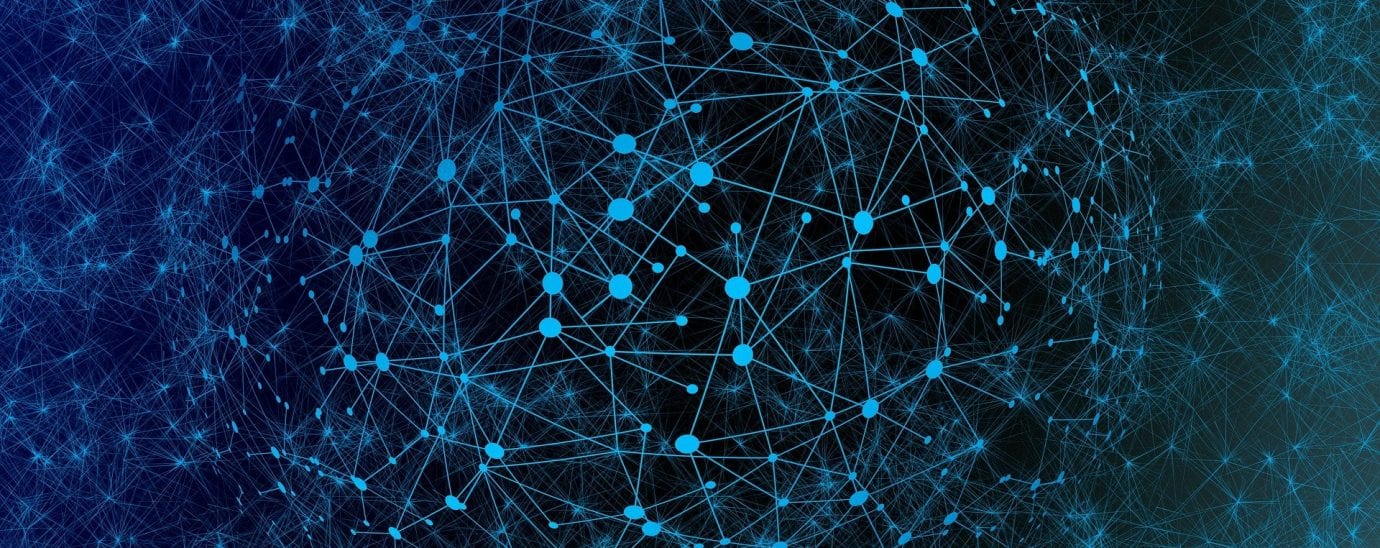Smart Predictions: The Connected Technology That Will Transform 2021

by Matthew Margetts, Director of Sales and Marketing at Smarter Technologies
Although we have bid a grateful farewell to 2020, the disruption and uncertainty we experienced are spilling over into 2021. If there is one thing that we learnt last year, however, it’s that we need to accelerate the pace of transformative change. Connected technology is of critical importance in this process, and is likely to be one of the key economic drivers going forward.
The digital and physical world continue to converge
2020 symbolises a turning point of adaptation to digital interactions in everyday life, be it working from home, ordering groceries or online schooling. Consumers in 2021 and beyond expect to experience a seamless blend of intertwined in-person and online interactions along the customer journey.
In the manufacturing world, we can expect the rapid growth of AI, IoT and other industrial automation technology, especially since human resources become less accessible and reliable.
Technology’s place in the boardroom
In 2020, technology proved to be a competitive advantage for some companies and a threat to the survival of others. In particular, the failure to have a genuine eCommerce presence cost many companies dearly. As a result of this, the lines between technology strategy and corporate strategy are beginning to blur. In order to survive and thrive, organisations need to assess their current tech capabilities and expand on future possibilities.
Data-driven decision making
To prepare for current changes and an unknown future, corporate and technology strategists need to have access to accurate data to analyse, identify trends, reduce wastage and inform their strategies.
The first step in this process is accurate data collection. This is enabled by Internet of Things (IoT) sensors and networks that are able to report on virtually anything, 24/7. The next step is the ability to analyse this data. Again, technology platforms with advanced analytics capabilities, automation and artificial intelligence (AI) are making meaningful analytics a possibility. By using tools such as cloud-based dashboards, organisations have the ability to:
- Identify internal and external strategic forces
- Inform decisions
- Monitor outcomes
- Develop strategies continuously and dynamically
Information technology accessed by everyone, but trusts no-one
Cloud-first, cloud-only
One of the first steps in digital transformation is modernising legacy enterprise systems and migrating them to the cloud. The adoption of cloud-based applications became particularly important in 2021, with a large proportion of the office-based workforce operating from home. In order to continue with business as usual, employees needed access to critical software and collaborative working. In 2021, organisations will adopt a cloud-first mentality when it comes to building or upgrading technology infrastructure.
Zero trust is a must
In an increasingly digital world, cybersecurity is high up on the list of organisational risks. Zero trust security (which involves security measures that require everything to be verified) is shaping cybersecurity initiatives. In a zero trust architecture, there is no inherent trust, and every access request should be validated based on:
- User identity
- Device
- Location
- Any other variables that provide context to each connection
Access to data, applications and workloads is provided based on the principle of least privilege.
For most companies, the creation of a zero trust architecture will require third-party assistance from digital transformation experts in IoT spheres.
Supply chains move to the front office
Supply chains were once seen as ‘behind-the-scenes’ necessities. When COVID-19 hit, it quickly became evident that even the most resilient and agile supply chains were only as strong as the weakest links.
A recent survey of supply chain professionals found that 97% of respondents said that their organisations experienced disruptions related to COVID-19. The same survey found that 73% of respondents are now planning major shifts in the way they approach procurement and supply chain management.
Read More: A connection between carers and patients requires connected technologies
In 2021, more and more organisations are realising that the way they conduct their supply chains can actually become a competitive differentiator. Accelerated by the COVID-19 pandemic, customers are increasingly looking for more streamlined supply chains, fast, contactless delivery and greater traceability. In addition, organisations are realising the value of data extracted through the supply chain network.
There is a growing trend to fit products with IoT-enabled sensors that provide 24/7 asset visibility from the source to the hands of the consumer. The ability to capture larger volumes of real-time data allows supply chain operators to mine this data for operational insights.
In addition, the use of drones, condition monitoring, robots and image recognition are making physical supply chains more effective, efficient and safer.
Contactless customer service
Delivery and shipping
Born out of customer desire to minimise physical contact, contactless delivery options will continue to develop in 2021. Contactless delivery is made possible by artificial intelligence-based applications and robotics.
Telemedicine
To minimise the risk of COVID-19 exposure in the healthcare sector, practices have started implementing more telehealth offerings. These include:
- Remote/video consultations
- A.I-based diagnostics
- No-contact medication delivery
Autonomous vehicles
Autonomous driving technology is set to make significant progress during 2021, with major manufacturers such as Honda and Ford announcing plans to mass-produce autonomous vehicles and launch autonomous driving ridesharing services.
Zero food waste
Food security came to light in the midst of supply and demand challenges brought about by the coronavirus in 2020. In 2021, reducing food waste is moving higher up the agenda.
The UN’s Food and Agriculture Organisation reports that more than 30% of the world’s food is lost or wasted every year. Smart technology can be used to reduce food waste, increase food security, and assist with better distribution of food resources worldwide. For example, automated, sensor-based inventory management and replenishment ensures that the correct quantities of food are ordered at the right time, completed without human intervention and inaccuracies.
Blockchain
And, finally, no series of predictions would be complete without a quick comment on blockchain technology. For the most part, the application of blockchain tech is overshadowed by its “poster boy” application—Bitcoin and other crypto currencies. However, as we move into a smarter age, the process accountability distributed ledger technology guarantees will ensure that 2021 will see greater transparency on ordering, delivery and workstream management, along with a host of tradable asset ledgers coming online. All of which will improve efficiency across operating lines and help cut waste.
Technology and transformation 2.0.2.1
These trends predicted for 2021 are connected by the thread of digitalisation and connected technology. The need for this transformation was accelerated by the ‘new normal’ necessitated by the coronavirus pandemic, which set the world on a course towards powerful new digital capabilities. Daunting as this may seem, having the right technology partners on board helps organisations take advantage of the critical technology trends of today.
About Smarter Technologies
Smarter Technologies tracks, monitors and recovers assets across the globe in real-time, providing asset tracking systems to the open market and fulfilling the world’s most complex asset tracking requirements. Our services cover a vast array of business sectors, products and equipment from container or pallet tracking to military-grade devices; and can be used across a broad spectrum of industries.
Smarter Technologies also provide smart building solutions for modern businesses, offering wire-free, battery-powered and low-cost IoT smart sensor technology. Our solutions will put an end to scheduled maintenance and help businesses utilise their building’s efficiency, benefitting from real-time alerts and facilities management tools that will bring them into the 21st century.
